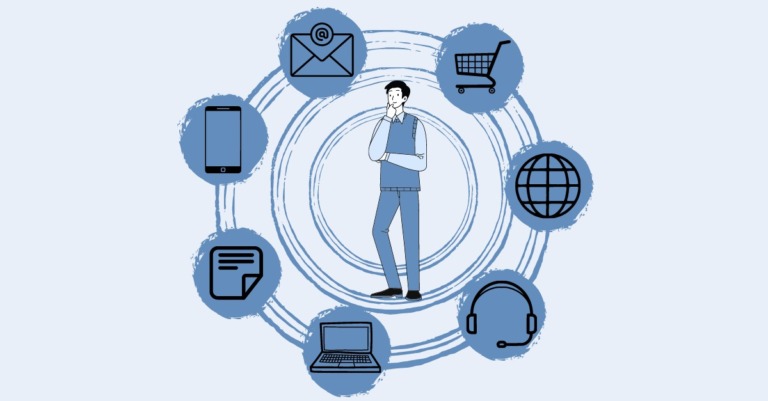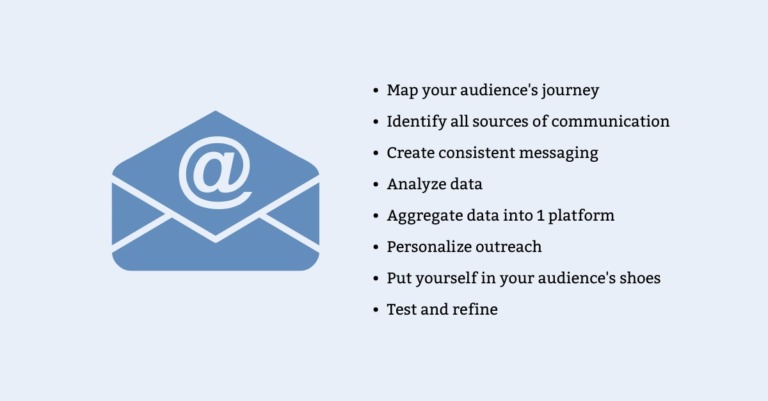Embracing the omnichannel customer revolution
Planning how companies communicate with their customers has always been a vital component of the marketing strategy; nevertheless, the pace of innovation continues to expand new ways customers can reach businesses. For this reason, omnichannel is now recognized as one of the most important aspects to consider when developing marketing strategies. Twenty years ago, customers did not have the diversity of channels we have, meaning that channel choice did not radically influence customer service outcomes.
Today, the story changes.

The astounding number of options available to communicate with companies makes optimizing their omnichannel approach a priority, pushing marketers to consider different touchpoints of the customer journey. But what is an omnichannel marketing strategy, and how can you achieve customer-centric success?
What is omnichannel marketing?
What was once a one-stop shop has become a multilayered interaction that takes over different channels. These channels do not specifically talk from the technological sense but can also include newspapers, catalogs in the mail, word of mouth, and many others. As audiences today interact with brands 24/7, online and offline, omni marketing helps present the business consistently and offers users a seamless customer journey. Think of it this way: an omnichannel customer bounces from channel to channel, so consistent brand messaging and content that reflects each stage of the customer journey should be delivered through all marketing channels.
What is the difference between omnichannel marketing and multichannel marketing?
These two terms differ because omni marketing focuses on the consumer, while multichannel strategy focuses on the product or service. Let’s break it down a bit further for you; with multichannel marketing, a customer may receive a standard email or discount after buying from you, but the main difference here is that with an omnichannel strategy, it goes that extra mile personalizing the message and providing a seamless experience.
Key steps for omnichannel marketing

- Evaluate your channels
Sometimes less is more. Omnichannel marketing does not mean throwing your brand on every platform and channel but being where your clients are and the functional ones. To achieve this, market research is required. Rather than squander resources on every platform that comes to mind, focus and prioritize where the presence of your audience is more substantial.
- Create a single voice and brand presence
One of your omnichannel marketing objectives is to portray a powerful and coherent voice that strengthens your brand. Integration is the secret to a smooth user experience and platform switchover. No matter how they interact with you, your current and potential consumers should sense the same vitality and presence. As a result, a feeling of trust and familiarity is created; the pattern will be recognized everywhere instantly and result in a single experience.
- Focus on targeting and personalization
As mentioned previously, omnichannel marketing centers around customers and the ability to deliver a seamless and cohesive brand message. The ultimate goal of this strategy is to use different platforms and channels to take control over your content and make users see other sides of your company.
Conclusion
You may wonder whether it’s worth investing time and effort to implement omnichannel marketing, and the answer will always be yes. The more channels you use, the more valuable they become, but remember to be tactical about this and be where your client is. Make sure you are in all the customer journey touchpoints to move along the funnel.
If you are interested in learning more about marketing strategy, you might be interested in reading our article Targeting strategy for advertising campaigns: Broad vs Narrow Targeting
Paula de Leon Ramirez
Share
Recent Articles

Sustainable Marketing: Long term Sustainability Success
Previous Post Sustainable Marketing in the Digital World: Embracing Sustainability for long term Success In today’s digital era of constant connectivity, marketing has evolved into

Google Analytics 4. Collecting data in 2023
Previous PostNext Post Google Analytics 4 (GA4) and the new way of collecting data in 2023 In an era driven by data, businesses are increasingly

Communication in project management: easier said than done?
Previous PostNext Post Communication in project management: easier said than done? Communication is the foundation of Project Management. But, what is the ‘right’ way to
